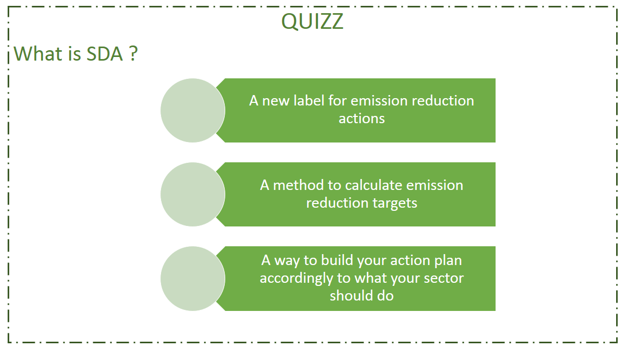- Početna
- Aktivnosti!
- Razvijenost
- Ciljevi temeljeni na znanosti i IEA scenariji
- Science Based Targets & IEA scenarios
Science Based Targets & IEA scenarios
The Intergovernmental Panel on Climate Change (IPCC) is the scientific foundation of every GHG accountability methodology. But in order to efficiently reduce its GHG emissions, organizations have to know what is really expected from them. How can they define 2° compatible targets ? The general idea is to reduce emissions by 75% in 2050, but some economic sectors should surely do more efforts than others to reach this common goal (for example the energy sector).
The IPCC offers 4 emission scenarios for the 21st century.The International Energy Agency (IAE) develops specific scenarios (2DS for example) for the energy sector, which describe the future emission variations from coal, oil, gaz, etc.
These scenarios are then usable for comparing the emission trajectories of an organization with the sector trajectory.
In order to build the trajectory, the CDP (ex Carbon Disclosure Project), the World Resources Institute (WRI) and the World Wild Fund (WWF) have created a method named “Science Based Targets”. This method regroups a lot of projects, wherein a Sectoral Decarbonization Approach (SDA) allows the user to determine its sectoral contribution to climate change and how should evolve its emissions in order to reach the 2° objective.
This method is built on voluntary contributions : SDA is developed progressively. For now, the following sectors are covered :
-
electricity production
-
steel production
-
chemistry
-
aluminium production
-
cement production
-
paper production
-
freight (road, rail, plane)
-
construction industry
This sectors are responsible for the main part of the human emissions.They are also considered uniform: their activity and their emissions are linearly linked. For example, you could say that if the organization sales revenue increases by 20%, its emissions will rise by 20% too.
To see the answer of the quizz, just move the mouse over the picture !
See the next page on " International ACT experimentation" or return to the menu.

